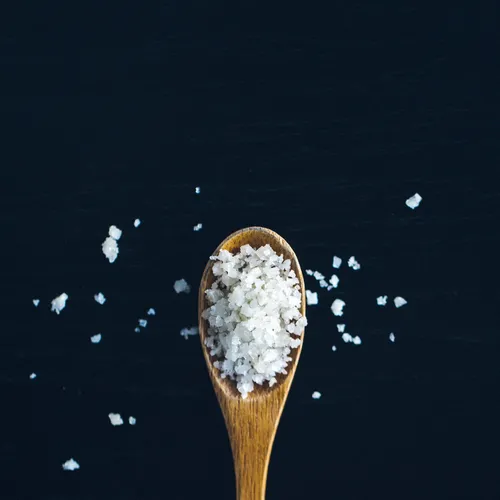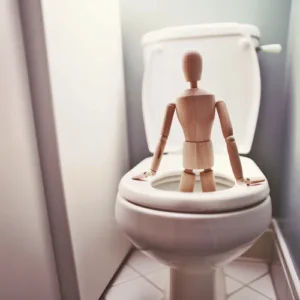Excess dietary salt is linked to high blood pressure, which increases your risk of stroke, heart disease and kidney disease. But how exactly does salt raise blood pressure, and what can you do to reduce your salt intake?
How Salt Impacts Blood Pressure
Table salt is made up of sodium and chloride. Consuming too much sodium from salt is associated with hypertension (high blood pressure). The mechanisms behind this link are not fully understood, but some theories suggest:
- Salt may increase arterial stiffness. Arteries help carry blood from the heart. Normally their walls are stretchy and elastic to accommodate changes in blood flow and pressure. But sodium may damage artery walls, making them stiffer and unable to stretch properly to regulate pressure.
- More sodium leads to more sodium in the blood. Kidneys work to excrete excess sodium, but sometimes cannot keep up. Higher sodium levels increase thirst and fluid retention, which can raise blood pressure. Sodium also increases levels of the hormone angiotensin II, which effectively constricts blood vessels and raises pressure.
Salt’s Quick Effect on Blood Pressure
The magnitude and timing of salt’s effect on blood pressure depends on the amount consumed. Small amounts of sodium (46-115mg) may take days to impact blood pressure, while larger amounts (345mg+) can raise it within an hour. For reference, 1⁄2 teaspoon of salt has about 1,150mg sodium.
How Much Sodium Do We Really Need?
While the average sodium intake is around 3,400mg daily, we likely only require 500mg per day to stay healthy. This minimal amount of sodium occurs naturally in foods like vegetables, fruits, grains and unsalted nuts. Consuming more than the bare minimum isn’t necessarily problematic – many experts consider intakes up to 2,300mg per day to be moderate and safe. Only consistently exceeding this level may potentially impact blood pressure.
It’s also worth noting sodium needs can vary by individual factors like genetics, age, and activity levels. Endurance athletes who sweat heavily, for example, may require more than a sedentary person. But overall, most people take in far more than the 500-2,300mg range recommended for good health. Bringing intake closer to these guidelines can provide benefits.
Salt Sensitivity
While not everyone’s blood pressure is sensitive to salt, studies suggest about 75% of people experience some degree of “salt sensitivity” where sodium intake correlates with increased blood pressure. Those less sensitive can still benefit from lowering salt intake, as excess sodium causes other health issues.
Cutting Salt to Reduce Blood Pressure
For most people, reducing dietary salt intake can lower blood pressure. We likely only need 500mg of sodium daily, but average intake is around 3,400mg – over 6 times higher. Even slightly reducing salt, regardless of starting levels, can improve blood pressure.
The DASH diet is one effective way to cut sodium and lower blood pressure. It recommends:
- 6-8 servings of whole grains daily
- 4-5 servings of fruits daily
- 4-5 servings of vegetables daily
- 2-3 servings of low-fat dairy daily
- 6 or less servings of lean meat, fish or poultry daily
- 4-5 servings of nuts, seeds and legumes weekly
- Limited fats and sweets
- Less than 2,300mg sodium daily (ideally closer to 1,500mg)
This balanced diet provides healthy options across food groups while restricting sodium.
Reducing Your Salt Intake
Apart from the DASH diet, you can lower sodium intake by:
- Avoiding or limiting high-salt foods like crisps, processed meats, cheese, ready meals and takeaways
- Choosing low-sodium options using food labels
- Using herbs and salt-free seasonings rather than salt when cooking at home
Signs of Excess Salt
Consuming too much salt can cause:
- Excessive thirst
- Bloating
- Fluid retention
- Nausea
- Increased urination
These symptoms can also result from other causes like high blood sugar. See your doctor if you have these issues.
Why Lower Salt for Lower Blood Pressure
High blood pressure rarely causes noticeable symptoms, yet over 5 million UK adults have undiagnosed hypertension. This silently raises their risk of stroke, heart disease and kidney failure over time. Getting your blood pressure checked regularly is important to detect and address any problems early.
Consider buying a validated home blood pressure monitor so you can easily keep track of your levels. Input your results into an online blood pressure calculator to understand where you stand and if any lifestyle changes like lowering salt intake might help improve your cardiovascular health.
Who Shouldn’t Cut Salt
Most people can benefit from reducing excess salt intake, but two groups should be cautious:
- Those prone to low blood pressure – Some dietary salt helps prevent blood pressure dipping too low and causing fainting.
- Pregnant women – Consuming too much or too little salt can cause issues like impaired foetal growth. Unless advised by their doctor, pregnant women should aim for a moderate salt intake.
So in summary, reducing sodium from salt can effectively help control blood pressure for most people. But even if your levels don’t seem salt-sensitive, cutting back on sodium provides overall health perks. Monitoring your blood pressure and being mindful of sodium sources allows you to make informed decisions about your salt consumption.
How to Check Your Salt Intake
Wondering how your current sodium intake stacks up? Here are some tips to gauge and track how much salt you’re getting:
- Keep a food diary – Writing down everything you eat and drink for a few days, along with sodium content, provides insight on your levels.
- Read nutrition labels – Check the sodium count on packaged foods and aim for low or reduced sodium options. Compare similar items to choose lower salt versions.
- Monitor condiment use – Things like soy sauce, teriyaki sauce, salad dressings and chicken stock can be high in sodium. Take note of how much you use.
- Consider an app – Some health apps let you input your food and provide nutrition analysis like sodium totals. This makes tracking easy.
- Ask about restaurant meals – Don’t be shy to inquire about sodium content when dining out so you can make informed menu picks.
- Enlist a wearable – Some activity trackers estimate sodium intake based on heart rate and hydration. Though not totally precise, they provide a general idea of salt levels.
Once you know where you stand with sodium, you can make more educated changes to lower your intake if needed for healthy blood pressure.
Who Shouldn’t Cut Salt
Most people can benefit from reducing excess salt intake, but two groups should be cautious:
- Those prone to low blood pressure – Some dietary salt helps prevent blood pressure dipping too low and causing fainting.
- Pregnant women – Consuming too much or too little salt can cause issues like impaired foetal growth. Unless advised by their doctor, pregnant women should aim for a moderate salt intake.
So in summary, reducing sodium from salt can effectively help control blood pressure for most people. But even if your levels don’t seem salt-sensitive, cutting back on sodium provides overall health perks. Monitoring your blood pressure and being mindful of sodium sources allows you to make informed decisions about your salt consumption.
Photo by Jason Tuinstra on Unsplash
Zoom Health is a leading UK supplier of Home Health Tests and Earplugs





